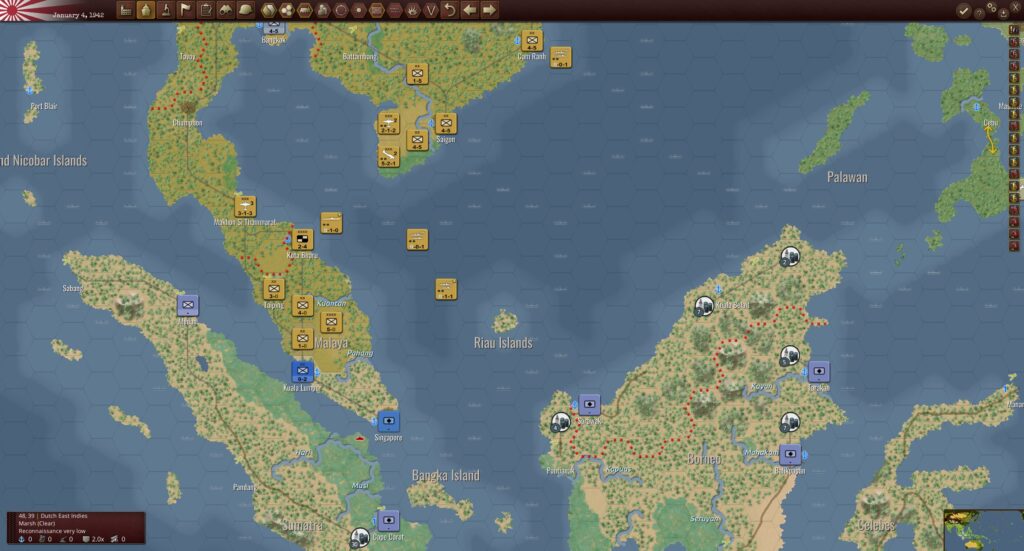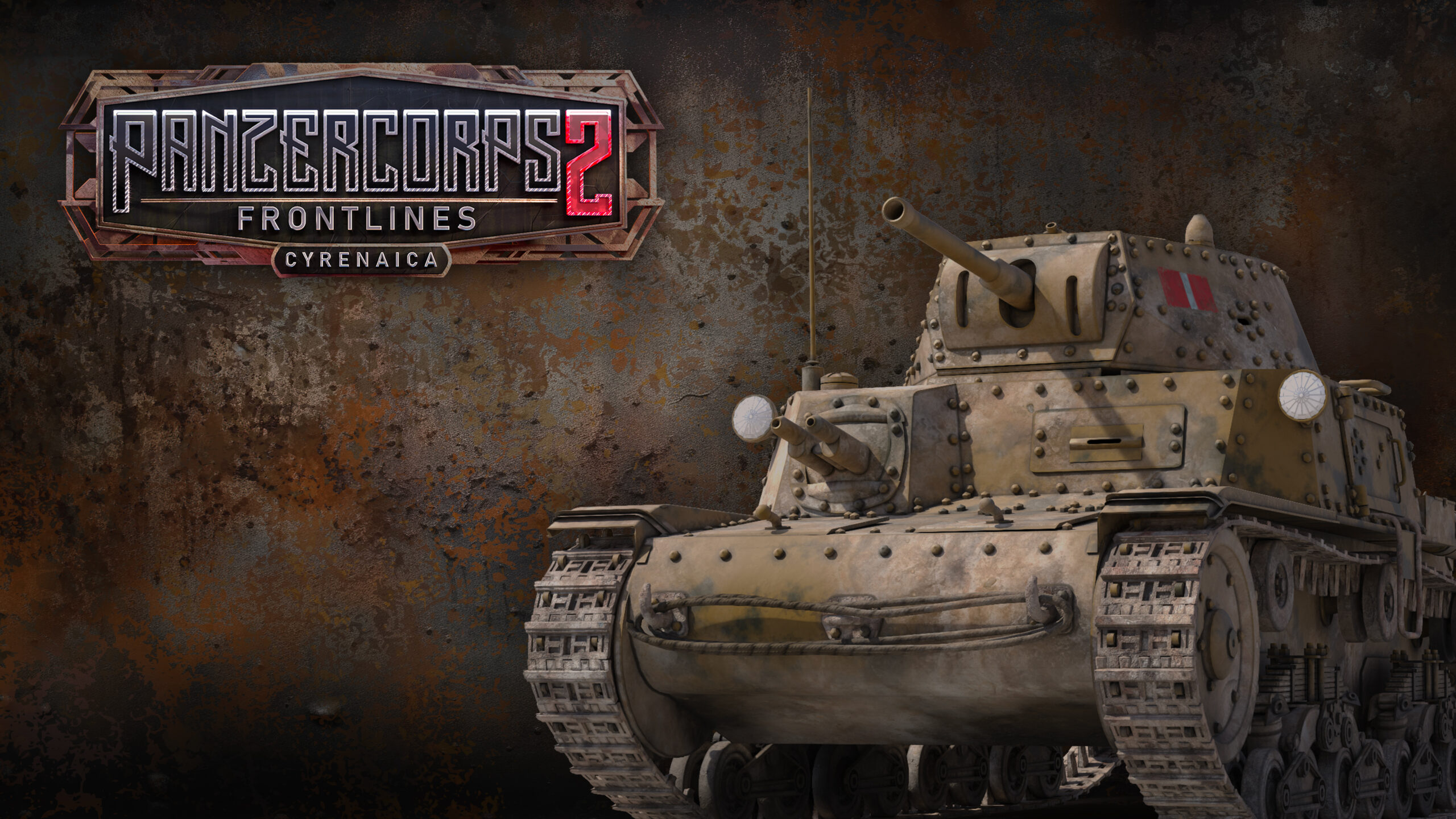When the original large-scale operational WarPlan was out in 2019, it came with much anticipation and expectation from the community. Promising to bring the classical board wargames mechanics to the computer platform; By removing the hassle of chits placing while retaining the complex system and compressing a day of fun to manageable hours.
While the first WarPlan covered Europe, the standalone Pacific edition is mainly focused on the Pacific War as the name implies, including island hopping from Guam to Iwo Jima and the greater China region. However, the crown jewel is the centre stage of the Sino-Japanese war. Stretching from inner Manchuria all the way to British Malaya and the Dutch East Indies.
There are five campaigns to choose from, from the 1936 initial Japanese invasion into China proper lit by the incident at Marco Polo bridge up to the primary campaigns of 1941 and 1942 in the Pacific encompassing Japan’s plan for Greater East Asia Co-Prosperity Sphere for Asia, and the pinballing operations of the Solomon Islands with your marines.
The gameplay is a turn-based IGOUGO system following its inspired tabletop counterpart. Virtual chit counters represent units, and the game gives you the ability to change the stats layout like movement, attack and defence on the face of the counter. This varies across the air and naval units. An example is that your air force units have air-to-air and strategic bombardment stats that the land units do not possess.
The flow of combat revolves around coordinated ground attacks with minor and insignificant air support. You can group multiple units and attack from all directions. Armies spent action points on moving and attacking. Unlike most tabletop board games, you can’t stack the same type in one hex, which is pitiful for a board game inspired computer wargame. However, you can stack one of each type, like a single naval and air unit.

When playing as the ferocious Japanese, you’ll find yourself grinning with glee for the first half and frantically searching for broken supply lines after realising you fell in too deep into the tiger’s maw.
Sadly, there’s little you can do to prevent raving Chinese partisans from throwing a wrench into your plans by disrupting railroad lines and possibly rallying into a benign but irritating militia across conquered lands. WarPlan Pacific forces you to dedicate troops at the back of your frontlines. A constant reminder of the paralysing fear when occupying foreign lands that do not welcome you or your God-like emperor.
What the Chinese General Chiang Kai-shek must have been worrying about at the time of the invasion should be the same as the players while playing as the Chinese. Although a sizable Sino army is at your command, the fanatical Japanese will push the Chinese further into the mainland, cutting off ports from Hong Kong to Shanghai and everything in between.
Not much can be done except shuffling units from the ever-shifting frontlines. The only hope is the reliance on the oil and other supplies from the United States and the desperation of Japan for oil if they could not secure British Malaya and the Dutch East Indies in the first few turns.
The AI is competent and tricky and will break through your frontline and encircle units if not protected or reinforced properly. Its personality can be characterized as slow and cautious but not aggressive. Still, it will provide a good challenge for defenders, it’s competent enough to seize opportunities to cut through your plans. On the other hand, naval warfare from the AI leaves much to be desired. In my playthrough, my navy was never once harassed by the Americans or British navy. even as it sat there in the Pacific.

What sets this game apart from other wargames of similar stature is the special rules it provides each faction on taking certain cities or ports based on historical outcomes. For instance, If you attempt to take Singapore before taking Bandar Lampung, Kuala Lumpur and Saigon, it will be nearly impossible to take the great fortification of the Singapore island even with two army groups. I tried, and I failed. Historically, Yamashita fooled the British commander, even with a smaller force, into surrendering to the Japanese using strategically targeted supply blockades and a heart of a poker player.
Another special rule is the watchful eyes of the soviets from the north of Manchuria, whose lust for your land and islands can’t wait to pounce on you come 1945. However, this timer can be shortened if the Japanese fail to place enough units in the region to discourage it from happening earlier. On top of this, as the war drags on, the steady increase in production and oil will flow into China’s wall of steel. There’s little you can do to remedy this except to finish the war as early as possible and holding important cities.
As with essential supply, oil will play an even more significant role in your progress in the campaign. This is felt most by the Japanese. As the airforce, navy and mechanised units will require oil to move and attack. The careless and wanton use of air raids and leaving your ships out in the water will dry out what little oil surplus you may have had and rob you of the ability for island hoppings and air support.
Convoy trading in this game is little to no use for an axis player; no one wants to trade with you, and Thailand is starved of any precious needed oil for your drive to Bruma. In mid to late game, convoy raiding from the Allies becomes aggressive and damaging to your already worn-out nation, leaving the solution of clicking away your convoy protection to any remaining trading routes to be demoralising and ultimately useless.

The inability to view your resources on the top panel is a minor negative forcing you to the production window. However, what is more frustrating is the lack of information on the oil upkeep of all your units, leaving you moving your units one by one to find out that it has no oil to move or attack. Fortunately, railroads provide an alternative and effective transport across the vast land of China.
Speaking of railroads, when supply lines are blocked, the map does not indicate which is affected except for the numbers on each hex showcasing the dwindling supply when it spreads outside of rail lines and into wooded and mountainous areas.
Since units only have two turns worth of supply when out of supply areas, you are forced to seek the next supply hex, and not all cities have supplies either. In the late game stage, you will need to quickly encircle cities and enemy forces to quickly occupy stronghold cities like Changsha to replenish your hungry armies.
There is still much to write about this game, but I can see it quickly devolving into an AAR of my playthrough as Imperial Japan. WarPlan Pacific is filled with promises and vision from Kraken Studios. It deserves to be on a list of modern and accessible computer wargames, sitting between Gary Grygbys War on the East and Strategic Command. I will highly recommend this wargame to anyone interested in the Pacific and Chinese theatre of the second world war or who wondered why China became too big even for python Japan to swallow.








Very good review, Max, on what I humbly consider a less than stellar game. I don’t know, Europe just seemed so vast with possibilities and the great editor with that game. This one just seems too confined, not much patching or mod support. But yes, if you are interested in the theater, it would be a solid buy. Anyway, best wishes!
Hi Rosseau, thanks for the kind thoughts. I do agree it’s focused but maybe lacks added depth to balance out the scope.